Natale con gli Artigiani del mondo dei beads - Christmas with the Artisans of the world of beads
 |
| Fiocchi di Neve €23 cadauno |
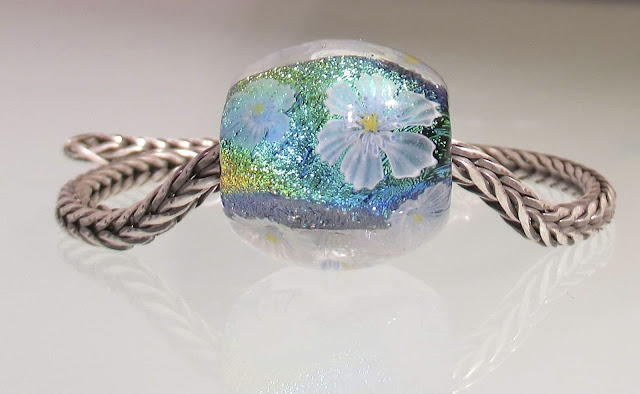 |
| Fiori Sakura €45 |
MELISSA GAMBARO è una artigiana orafa. Possiede un piccolo laboratorio orafo, con annessa gioielleria, situato in centro a Galliate (NO), nominato Melgiò. Il lavoro di Melissa nasce dapprima come passione, il lavorare con le mani, come nelle botteghe artigianali di una volta, e trasformare le idee in metallo prezioso sono tutto ciò che ama fare.
Potrete conoscerla un pochino meglio leggendo questa intervista che le ho fatto.
Melissa, da quanti anni svolgi questo lavoro e come hai iniziato?
Da piccola giocavo con la creta insieme a mia mamma e da lei ho preso la vena artistica (era professoressa di storia dell’arte), poi alle superiori ho fatto il liceo artistico sperimentale e lì ho potuto approfondire le tecniche scultoree. Il creare con le mani è una cosa che mi ha sempre appassionata molto, soprattutto le cose piccole come i gioielli.
Dopo il liceo, nel 2010 mi sono trasferita a Valenza (AL) per due anni ed ho studiato oreficeria all’istituto For.Al, svolgendo il corso di orafo progettista, tecnico di oreficeria e incassatura ed in alternanza lo stage presso aziende orafe del posto. Successivamente ho fatto uno stage per Cartier a Torino, poi ho lavorato come orafa al banco in altre fabbriche di oreficeria a Valenza, ma per me erano lavori poco creativi, troppo spersonalizzanti poiché tutto era limitato alla catena di montaggio. Così, quando tornavo a casa la sera, mi mettevo a creare gioielli come hobbista e poi li vendevo in mercatini in zona Novara.
La voglia di avere un negozio tutto mio era molta, ma sarebbe stato un passo troppo grande per me in quel momento e non avrei saputo dove né come aprire un negozio. Poi qualcosa è cambiato, sono stata costretta a rimanere a casa per un anno, per motivi di salute, e il non poter fare nulla mi ha motivata tanto nella scelta di costruirmi un laboratorio tutto mio, nel momento in cui sarei stata bene. Il destino ha voluto che proprio in quel periodo un orafo della mia città si trasferisse, così decisi di prendere il suo negozio e di farlo mio. Il 1° aprile 2017 ho aperto il negozio Melgiò ed è una grande soddisfazione, la coronazione di un mio grande sogno nel cassetto.
Realizzo gioielli interamente a mano con la tecnica della cera persa.
Parto da un’idea, che può avere in mente il cliente, e realizzo su questa uno schizzo, poi realizzo il prototipo in cera, partendo o dal blocco di cera oppure sciogliendo goccia su goccia, questa è la parte più minuziosa ma che mi dà maggiori soddisfazioni.
Per lavorare la cera utilizzo sia gli strumenti del mestiere che strumenti trovati per caso che possono servirmi, per essere più precisa: soprattutto bisturi, bulini, lime, spatole, aghi, punte di matite, tappi di bottiglia, stecchetti dei gelati.
Saldo alla base del prototipo un piantone di cera, che serve più avanti a far scorrere meglio il metallo fuso, e poi inserisco tutto in un cilindro di metallo. Colo al suo interno il gesso e metto sotto pressione il cilindro, per far fuoriuscire l’eventuale aria che potrebbe essersi formata e che creerebbe bolle nel gesso. Una volta indurito il gesso, metto il cilindro nel forno apposito per far colare via la cera, da qui la tecnica della “cera persa”. A questo punto si ottiene il calco del gioiello e colo all’interno il metallo fuso che ho scelto. Quando è ancora caldo il cilindro lo metto in acqua e così facendo si scioglie il gesso.
Si ottiene dunque la fusione, posso allora spiantonare e smerigliare il gioiello, passando da una grana più grezza ad una più fine e, se occorre, annerisco il pezzo mettendolo in un liquido apposito allo zolfo. Il gioiello è quasi pronto, lo lucido con spazzole e paste lucidanti adeguate.
Sicuramente la natura, l’accostamento di fiori a foglie, che non appartengono per forza alle stesse piante, mi piace molto, oppure la materia, le superfici disomogenee come la carta d’alluminio, una fetta di pane o le nervature quasi impercettibili di una foglia.
Può sembrare strano ma traggo spunto anche dagli scarabocchi che si fanno su di un foglio quando si è sovrappensiero. Da queste linee astratte e confuse riesco a delinearne forme, che utilizzo per creare gioielli eleganti e dalle linee armoniche.
Con tutta onestà? Sapermi vendere bene!
La parte della vendita che ahimè è fondamentale e che ho imparato direttamente sul campo quando ho aperto il negozio.
Per quanto riguarda l’oreficeria (così come in tutti i campi), penso ci sia sempre da imparare, capita io sperimenti cose che non avevo mai fatto prima e se non escono perfette al primo colpo, riprovo per cercare di migliorarmi sempre.
Adoro creare i modelli in cera, come dicevo, ci perdo la vista ma a volte dimentico l’ora e resto alzata fino a tardi per creare dei gioielli.
Mi piace molto partire da forme geometriche tridimensionali e riesco già così ad avere in mente la forma che creerò. Per rifinire i miei gioielli mi piace creare contrasti di luminosità: ad esempio sui petali dei fiori di ortensia che ho realizzato, ho creato una specie di increspatura, sino a renderli quasi satinati, mentre il bordo è lucido. Ottengo così un contrasto che accentua la luminosità di tutto il gioiello e risalta molto su qualsiasi incarnato.
I miei gioielli sono artigianali, è possibile che siano leggermente diversi l’uno dall’altro: questo rende unico ogni mio gioiello, così come in natura non esiste un fiocco di neve che sia uguale all’altro.
Questo Natale ho voluto dedicarmi proprio ai fiocchi di neve, che Natale sarebbe senza neve?!
La neve è simbolo di purezza, perfezione e transizione ovvero da neve può trasformarsi in acqua, come un nuovo inizio.
Viene associata al freddo e al ghiaccio, ma soprattutto alla purezza, all’incorruttibilità e all’elevazione spirituale. Anche nelle bufere di neve, ogni fiocco cade da solo, questo ricorda un po' la solitudine del periodo in cui stiamo vivendo.
I fiocchi di neve si distruggono facilmente e raffigurano la fragilità e il passare fugace della vita. Quando la neve ricopre tutto col suo candore, dona un senso di pulizia e freschezza, come se ripulisse il mondo da questo momento di tristezza e terrore causato della pandemia.
Oltre ai Fiocchi di Neve in varie dimensioni, propongo per questo Natale l'Omino di Zenzero, Sole&Luna, l'Angioletto, lo stop Giro di Ninfee e l'Orsetto.
 |
| Omino di Zenzero, in argento, per collana lunga €70 |
 |
| Orsetto €40 - Sole&Luna €50 - Angioletto €45 - Giro di Ninfee Stop €45 |
Melissa è una ragazza di grande dolcezza e sensibilità, senza le
quali probabilmente non creerebbe le meraviglie che potete qui ammirare.
Lo avrete senz'altro capito dalle risposte che ha dato.
Con passione
e dedizione, ci insegna che è possibile raggiungere e realizzare i
propri sogni, nonostante le avversità e gli imprevisti della vita. Ho
conosciuto Melissa alcuni anni fa attraverso un gruppo dedicato ai
nostri amati beads. Ancora non aveva realizzato il suo sogno ma sapevo
che sarebbe successo, poiché Melissa da subito si è mostrata in tutta la
sua bravura e in tutta la sua determinazione.
Uno dei suoi piccoli
Fiocchi di Neve è qui con me e mi terrà compagnia nel gelido inverno
(che amo) a ricordarmi l'unicità e la fugacità di ogni singolo attimo,
affinché si possa viverli appieno, esattamente come la fragilità e
l'unicità del fiocco di neve.
Melissa potete contattarla via email: melissa@melgio.it
Vi ricordo che Melissa esegue anche lavori su richiesta e personalizzazioni.
Alessandra, da quanti anni svolgi questo lavoro e come hai iniziato?
Ho iniziato a realizzare cofanetti artigianali all'inizio di quest'anno. Mi è sempre piaciuto disegnare, dipingere e, una mia cara amica, mi ha suggerito l'idea di applicare la mia vena artistica decorando scatole portagioie. L'idea mi è piaciuta moltissimo e mi sono lanciata nell'impresa!
Il cofanetto Anemone è stato il primo in assoluto, piuttosto minimalista: un cofanetto in legno dipinto con un fiore ispirato al famoso Anemone Trollbeads. Ho quindi deciso di spingermi oltre, documentandomi su nuove tecniche decorative e sfruttando le mie conoscenze pregresse legate ai materiali impiegati nel restauro.
Puoi raccontare qualcosa sulla tua tecnica?
La mia tecnica consiste nell'impiego di resina trasparente e pasta polimerica di vari colori. All'inizio utilizzavo paste che essiccavano all'aria, ma la loro consistenza non mi soddisfaceva e non mi permetteva di costruire l'oggetto che avevo in mente nei minimi particolari, motivo per il quale ho deciso di passare alla pasta polimerica, materiale che mi ha conquistata da subito.
Quale è per te primaria fonte di ispirazione?
La mia fonte primaria di ispirazione è la Natura in tutti i suoi aspetti (foglie, fiori, animali, rocce) e le creature legate alle leggende e al folclore dell'Europa del Nord come troll, gnomi, elfi e spiriti in generale legati ai boschi.
Che difficoltà incontri più di frequente nel tuo mestiere?
Mi è capitato di incontrare difficoltà nel momento in cui non mi limitavo a decorare una scatola in legno, ma dovevo radicalmente modificarne la forma e la struttura, allo scopo di ampliarla con l'aggiunta di cassetti, ali laterali ma soprattutto bilanciare in maniera ottimale il peso, talvolta considerevole, del coperchio decorato. La resina che utilizzo e che stendo a strati fino a raggiungere lo spessore desiderato, è piuttosto pesante e questo dipende dallo spessore e dall'ampiezza delle aree su cui viene versata: questo fa sì che sia necessario controbilanciarne il peso nella parte inferiore. Ho trascorso giorni interi ad inventarmi un sistema adatto e alla fine ci sono riuscita con alcuni accorgimenti! Non la definirei una "difficoltà", ma piuttosto una sfida al raggiungimento dello scopo...e io adoro le sfide!
Cosa ti dona maggior soddisfazione mentre crei e a creazione ultimata?
Quando inizio a decorare un cofanetto, parto da una immagine nella mia mente, suggerita dalla committente o entrambe le cose! Cerco di farmi un'idea di ciò che mi viene richiesto, facendo domande per approfondire i desideri della cliente e provando a vedere il lavoro finito attraverso i suoi occhi: questo per me è fondamentale, dal momento che è a lei che alla fine vorrei donare, attraverso il mio lavoro, qualcosa che possa contenere un piccolo sogno o fantasia.
Nel corso delle varie fasi di lavoro, invio foto e mi confronto al fine di assecondare i desideri della persona: mi metto nei panni di chi mi chiede di decorare un oggetto e cerco in qualche modo di renderla partecipe di qualcosa che alla fine diverrà suo. Questa per me è una soddisfazione grandissima, come il fatto che, a lavoro ultimato, la committente sarà contenta.
Cosa proponi in vendita per questo Natale?
Dolcezza Autunnale - Scatolina decorata con riccio e foglie in pasta polimerica, resina e colori acrilici, foderata all’interno con feltro.
€34 inclusa spedizione tracciata.
Stellina di Natale - Scatolina decorata con stella di Natale in pasta polimerica, resina e colori acrilici, foderata all’interno con feltro.
€34 inclusa spedizione tracciata.
Volpe Addormentata - Scatolina decorata con volpe e foglie in pasta polimerica, resina e colori acrilici, foderata all’interno con feltro.
€44 inclusa spedizione tracciata.
Barriera Corallina - Cofanetto con barriera corallina in pasta polimerica, allestito con stecche in ottone portabeads, cassetto e ali laterali, interno rivestito in feltro.
€99 inclusa spedizione tracciata.
Frammenti di Mare - Cofanetto con spiaggia e stelle marine in pasta polimerica, resina, sabbia e colori acrilici. Allestimento interno con stecche in ottone tagliate su misura e feltro.
€59 inclusa spedizione tracciata.
Flora, Fauna e Fantasia - Cofanetto con decorazione stile Liberty in pasta polimerica, resina, pigmenti metallici in polvere e colori acrilici. Interno suddiviso in due parti con stecche in ottone e vano portagioielli, foderato in feltro.
€69 inclusa spedizione tracciata.
 |
| Due coperchi "work in progress", il primo in alto ispirato al famodo bead OAF Trollbeads |
Il colore esterno e il colore del feltro sono personalizzabili, come gli spazi interni e la fantasia sul coperchio.
Potete contattare Alessandra atraverso la sua pagina Facebook: https://www.facebook.com/Dal-
Come sempre vi attendo nei commenti, sono curiosa di sapere cosa vi ha colpito ;-)
A presto,
Elena
N.B. = Le fotografie sono di proprietà, in ordine, di Aldo Giannone, Melissa Gambaro e Alessandra Antoniani. Mi sono state gentilmente concesse per la pubblicazione a corredo delle interviste.
(© Vietata la copia e la riproduzione dei contenuti ed immagini in qualsiasi forma, da me non espressamente autorizzata)
ENGLISH
(I apologize if my translation is incorrect)
Now we are, it will be Christmas soon and it is time to think about gifts.
Gifts for someone you love, for someone you are grateful to or simply a gift for yourself, because rewarding yourself every now and then is good and Christmas is a great excuse to give yourself something more.
The offers of the best brands of composable jewelry, our beloved beads, are many and more or less captivating in shapes and colors.
Yet there are not only them on the market, as there is a parallel market for artisans, with equally (if not sometimes higher) attractive offers.
Buying from an artisan means helping him to grow, allowing him to feel gratified for the (many) hours spent behind a job that is first of all a passion.
Yes, a passion, the artisans put their heart inside their artifacts and you can see it with the naked eye, through the details, a shape, a nuance.
Being a craftsman today is tiring because the burdens are many and you have to be very prepared in everything, you cannot stop at the creative vein, there is also the bureaucratic part to follow, everything that concerns a large-scale product, where there are various figures who cover the various tasks, the craftsman is alone, even in his small way, to carry out all the tasks that are needed to design and showcase his work.
And it is for this reason that at least one purchase for Christmas should be made by them, who are the soul and the luster of shops and crafts, to reward their commitment, their dedication and their sacrifices. In exchange you will have an original object, often unique and of great emotional value.
So I thought of interviewing some of them, to get to know them more closely and to allow you to get in touch in order to make your Christmas purchases.
I thank Aldo, Melissa and Alessandra who have shown themselves available and enthusiastic about the idea of these interviews.
ALDO GIANNONE is a glass craftsman in all its forms, now he also makes beads but, for years, he has productively made eyes for stuffed animals. His shop is located in Alassio (Italy) and is open to the public, with the VAG sign, that is Vetri Aldo Giannone.
How many years have you been in this job and how did you get started?
I have been working glass for a lifetime, I started as a kid with my grandfather, a Murano master. So a start in the family. I started making the beads about ten years ago but since 2014 I can say that I have directed my business towards this genre in a more relevant way.
Can you tell us something about your technique?
My technique consists in using a blowtorch to melt the glass and an oven to temper the objects produced. Each type of processing has its particular tools, but the flame and the oven are two basic things for any form of processing.
In this period there is a process that I prefer and that I will continue to explore: Sakura flowers.
Japanese-style flowers are a puzzle of pre-prepared bits: pistils and petals.
The peculiarity of this technique is the ability to blend the petals as desired, making them seem impalpable.
It starts from the center, assembling all the pieces prepared and melting them into a single mass, then pulling everything to obtain the rod which, in section, will show the flower. Wand therefore that I made from nothing.
What is your primary source of inspiration?
You girls are my main source of inspiration. Most of the ideas start from you, which I then try to tame at the limits of matter, turning them into a bead.
What difficulties do you encounter most frequently in your profession?
The lack of the exact glass to achieve a certain effect. As far as one may apply, the current variety of glass on the market is abysmal: many types of colors. The same shade can be found in twenty different brands and each reacts in its own way. Impossible to know them all. The choice of glass to use is, in my opinion, the most difficult thing in the world of beads.
What gives you the most satisfaction while you create and when you are finished?
Being able to do something new as I wanted it.
What are you selling for this Christmas?
In October they asked me for the snowflakes, which I had already proposed in other colors, in white. Also for this bead there is the idea of a friend, only I did not like all white, so I added a glitter effect and this glass of effect was created. Perfect for Christmas and all winter.
Aldo is well known both in Italy and abroad in the world of beads, in recent years he has made many beads and satisfied many of us. The precision in the realization of his artifacts is millimetric, just look at the photograph of the wand that he himself made to understand the complexity, the delicacy of his work. Furthermore, the variety of beads he offers makes him an all-round artist.
A Snowflake cannot be missing in a Christmas-themed and winter-themed bracelet, hers are really beautiful.
You can get to know her a little better by reading this interview I did to her.
As a child I used to play with clay with my mother and I got the artistic vein from her (she was a professor of art history), then in high school I did the experimental art high school and there I was able to deepen the sculptural techniques. Creating with my hands is something that has always fascinated me a lot, especially small things like jewels.
After high school, in 2010 I moved to Valenza (Italy) for two years and studied goldsmithing at the For.Al institute, taking the course as a designer goldsmith, goldsmith and casing technician and alternating internships at local goldsmith companies . Later I did an internship for Cartier in Turin (Italy), then I worked as a goldsmith at the counter in other goldsmith factories in Valenza, but for me they were not very creative jobs, too depersonalizing since everything was limited to the assembly line. So, when I came home in the evening, I started creating jewelry as a hobbyist and then I sold them in markets in the Novara area.
The desire to have my own shop was great, but it would have been too big a step for me at that moment and I would not have known where or how to open a shop. Then something changed, I was forced to stay at home for a year, for health reasons, and not being able to do anything motivated me a lot in choosing to build my own laboratory, when I would be fine. Destiny wanted a goldsmith from my city to move in that period, so I decided to take his shop and make it mine. On 1 April 2017 I opened the Melgiò shop and it is a great satisfaction, the crowning of one of my great dreams.
Can you tell us something about your technique?
I make jewels entirely by hand with the lost wax technique.
I start from an idea, which the customer may have in mind, and I make a sketch on it, then I make the prototype in wax, starting either from the block of wax or melting drop by drop, this is the most meticulous part but it gives me greater satisfaction.
To work the wax I use both the tools of the trade and tools found by chance that I may need, to be more precise: above all scalpels, burins, files, spatulas, needles, pencil points, bottle caps, ice cream sticks.
I balance a wax column at the base of the prototype, which is used later to make the molten metal flow better, and then I insert everything into a metal cylinder. I put the plaster inside it and put pressure on the cylinder, to release any air that may have formed and which would create bubbles in the plaster. Once the plaster has hardened, I put the cylinder in the special oven to let the wax run off, hence the “lost wax” technique. At this point we obtain the cast of the jewel and I pour the molten metal I have chosen inside. When the cylinder is still hot I put it in water and in doing so the plaster melts.
The fusion is then obtained, I can then smooth and sand the jewel, passing from a coarser grain to a finer one and, if necessary, I blacken the piece by putting it in a special sulfur liquid. The jewel is almost ready, I polish it with appropriate brushes and polishing pastes.
Surely nature, the combination of flowers and leaves, which do not necessarily belong to the same plants, I really like, or the material, the inhomogeneous surfaces such as aluminum foil, a slice of bread or the almost imperceptible ribs of a leaf.
It may seem strange but I also draw inspiration from the scribbles that are made on a sheet when you are lost in thought. From these abstract and confused lines I can outline shapes, which I use to create elegant jewels with harmonious lines.
What difficulties do you encounter most frequently in your profession?
In all honesty? Knowing how to sell well!
The part of the sale that alas is fundamental and that I learned directly in the field when I opened the shop.
As for goldsmithing (as well as in all fields), I think there is always something to learn, it happens that I experience things that I had never done before and if they do not come out perfect the first time, I try again to try to always improve myself.
I love to create wax models, as I said, I lose my sight but sometimes I forget the time and stay up late to create jewels.
I really like starting from three-dimensional geometric shapes and I can already have in mind the shape that I will create. To refine my jewels I like to create contrasts of brightness: for example, on the petals of the hydrangea flowers that I made, I created a kind of ripple, until they are almost satin, while the edge is shiny. In this way I get a contrast that accentuates the brightness of the whole jewel and stands out a lot on any complexion.
What are you selling for this Christmas?
My jewels are handcrafted, it is possible that they are slightly different from each other: this makes each of my jewels unique, just as in nature there is no snowflake that is the same as the other.
This Christmas I wanted to dedicate myself to snowflakes, what would Christmas be without snow ?!
Snow is a symbol of purity, perfection and transition, i.e. from snow it can turn into water, like a new beginning.
It is associated with cold and ice, but above all with purity, incorruptibility and spiritual elevation. Even in blizzards, each flake falls by itself, this is a little reminiscent of the loneliness of the time we are living in.
Snowflakes are easily destroyed and represent the fragility and the fleeting passing of life. When the snow covers everything with its whiteness, it gives a sense of cleanliness and freshness, as if it were cleaning the world from this moment of sadness and terror caused by the pandemic.
In addition to the Snowflakes in various sizes, I propose for this Christmas the Gingerbread Man, the Sun & Moon, the Angioletto, the stop Giro di Ninfee and the Bear.
Melissa is a girl of great sweetness and sensitivity, without which she probably would not create the wonders you can admire here. You will certainly have understood this from the answers he gave.
With passion and dedication, he teaches us that it is possible to reach and realize one's dreams, despite the adversities and unexpected events of life. I met Melissa a few years ago through a group dedicated to our beloved beads. He still hadn't realized his dream but I knew it would happen, since Melissa immediately showed herself in all her skill and in all her determination.
One of his little Snowflakes is here with me and will keep me company in the freezing winter (which I love) to remind me of the uniqueness and fleetingness of every single moment, so that we can fully experience them, just like the fragility and uniqueness of Snowflake.
You can contact Melissa via email: melissa@melgio.it
ALESSANDRA ANTONIANI is a restorer of paintings and lives in Anguillara Veneta (Italy). Not finding outlets in his sector, he decided to embark on this new path, creating decorated jewelery boxes, thus putting his knowledge at the service of this other growing business, named "Dal sogno alla realtà".
How many years have you been in this job and how did you get started?
I started making handcrafted boxes earlier this year. I have always enjoyed drawing, painting and, a dear friend of mine, suggested the idea of applying my artistic vein by decorating jewelery boxes. I liked the idea very much and I started the business!
The Anemone box was the first ever, rather minimalist: a wooden box painted with a flower inspired by the famous Anemone Trollbeads. I therefore decided to go further, researching new decorative techniques and exploiting my previous knowledge related to the materials used in the restoration.
Can you tell us something about your technique?
My technique consists in the use of transparent resin and polymer clay of various colors. At the beginning I used pastes that dried in the air, but their consistency did not satisfy me and did not allow me to build the object I had in mind in the smallest details, which is why I decided to switch to polymer clay, a material that I he conquered immediately.
What is your primary source of inspiration?
My primary source of inspiration is Nature in all its aspects (leaves, flowers, animals, rocks) and creatures related to Northern European legends and folklore such as trolls, gnomes, elves and spirits in general related to the woods.
What difficulties do you encounter most frequently in your profession?
I happened to encounter difficulties when I did not limit myself to decorating a wooden box, but I had to radically modify its shape and structure, in order to expand it with the addition of drawers, side wings but above all to optimally balance the weight, sometimes considerable, of the decorated lid. The resin that I use and that I spread in layers until it reaches the desired thickness, is quite heavy and this depends on the thickness and width of the areas on which it is poured: this makes it necessary to counterbalance the weight in the lower part. I spent whole days inventing a suitable system and in the end I succeeded with some tricks! I wouldn't call it a "difficulty", but rather a challenge to reach the goal ... and I love challenges!
What gives you the most satisfaction while you create and when you are finished?
When I start decorating a box, I start with an image in my mind, suggested by the client or both! I try to get an idea of what is asked of me, asking questions to deepen the wishes of the client and trying to see the finished work through her eyes: this is fundamental for me, since it is to her that I would like to donate in the end, through my work, something that can contain a small dream or fantasy.
During the various phases of work, I send photos and compare myself in order to satisfy the wishes of the person: I put myself in the shoes of someone who asks me to decorate an object and I try in some way to make them participate in something that will eventually become his. This is a great satisfaction for me, like the fact that, when the work is completed, the client will be happy.
What are you selling for this Christmas?
Box decorated with hedgehog and leaves in polymer clay, resin and acrylic colors, lined inside with felt.
€34 including tracked shipping.
Box decorated with a Christmas star in polymer clay, resin and acrylic colors, lined with felt inside.
€34 including tracked shipping.
€44 including tracked shipping.
Casket with coral reef, set up with brass rod holders, drawer and side wings, interior lined in felt.
€99 including tracked shipping
Casket with beach and starfish, in polymer clay, resin, sand and acrylic colors. Internal set-up with custom cut brass slats and felt.
€59 including tracked shipping
Casket with Art Nouveau decoration in polymer clay, resin, metallic powder pigments and acrylic colors. Interior divided into two parts with brass ribs and jewelery compartment, lined in felt.
€69 including tracked shipping
The external color and the color of the felt are customizable, as are the internal spaces and the pattern on the lid.
Alessandra has a real talent, if you can see the pictures she paints and restores, you will understand what I mean. Even the jewelry boxes he creates are real works of art, nothing is left to chance, colors, shapes, textures, all reproduced with skill.
Talent has no boundaries and for this Alessandra is free to express herself in the different forms of art she knows. If you buy for a gift, I am sure that whoever receives it will be amazed and if you buy for yourself, you will be more than satisfied to own such a precious box, so precious that it will not be just a jewelry box but a beautiful piece of furniture for your home.
For purchases, you can contact Akessandra through the Facebook page: https://www.facebook.com/Dal-
Do not hesitate to contact them even just for information, they will be happy to answer you.
Other craft related interviews will be out in the next few days, protagonists: Michela Falchetti, Luisa Vetuschi, Maria Paola Striano and Annalisa Ferrante. Hobbyists will follow.
As always I wait for you in the comments, I'm curious to know what struck you ;-)
Elena
N.B. = The photographs are owned, in order, by Aldo Giannone, Melissa Gambaro and Alessandra Antoniani. They have kindly been granted to me for publication to accompany the interviews.
(© Forbidden to copy and reproduce the contents and images in any form, not expressly authorized by me)





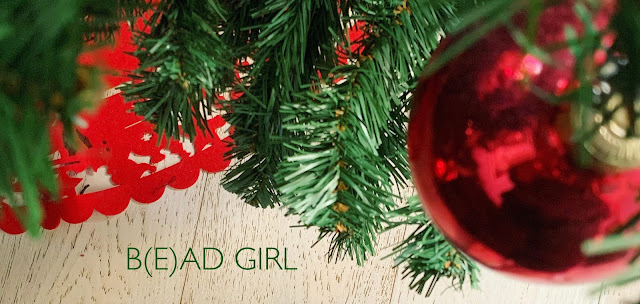


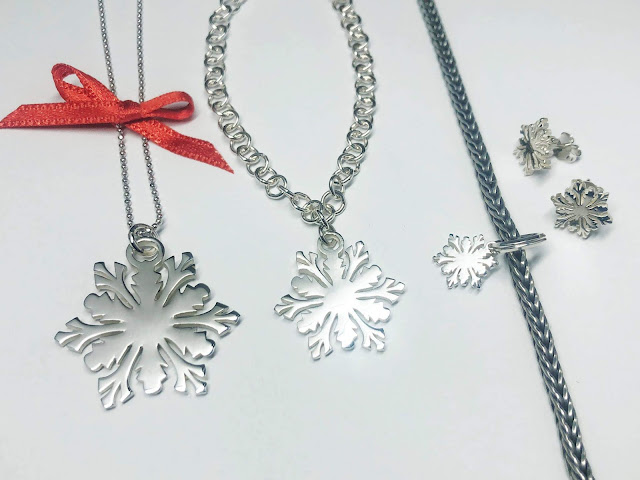



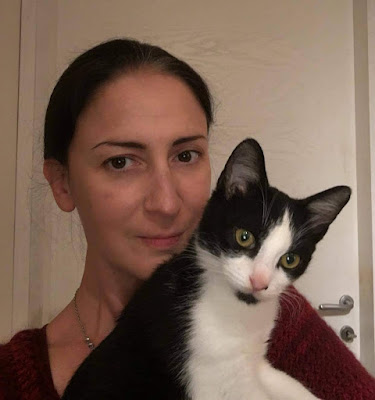



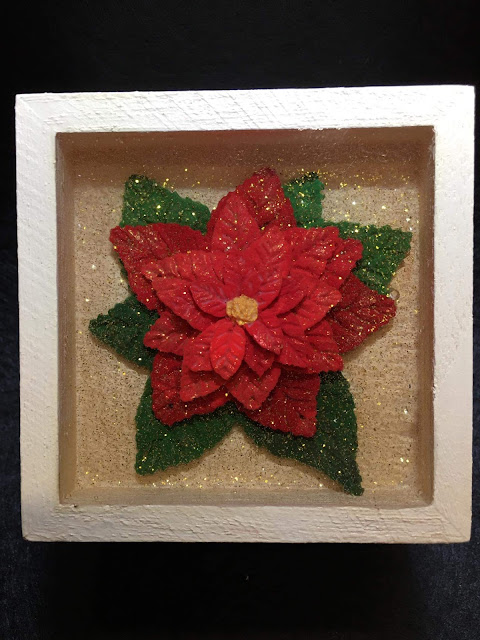
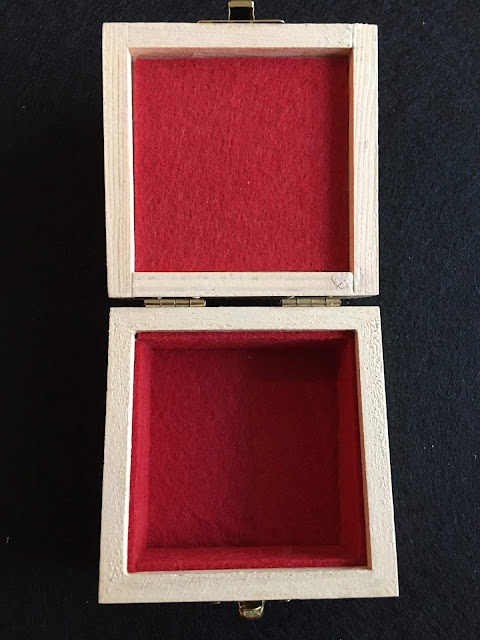


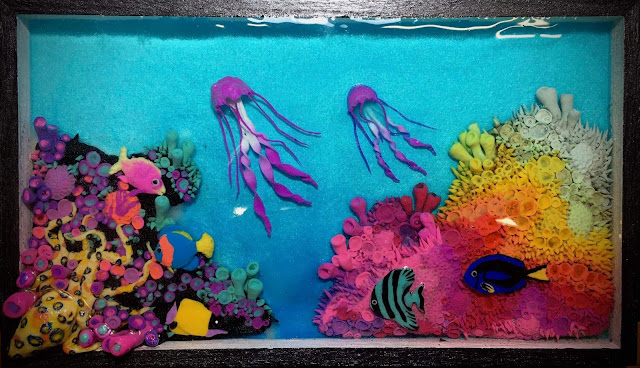



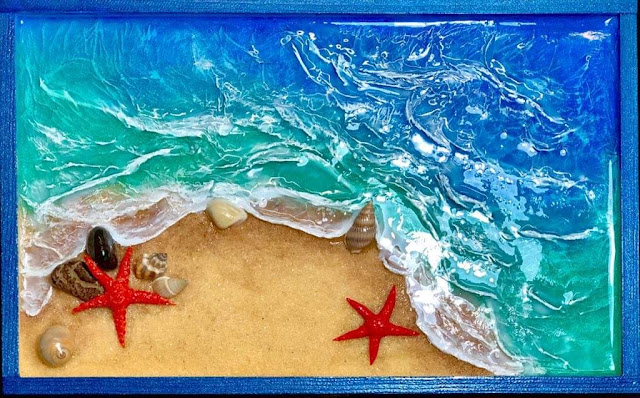








Commenti
Posta un commento